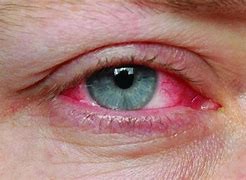Despite medical guidelines against the use of antibiotics for pink eye, many children with the ailment are nevertheless receiving them.
Despite recommendations that advise against it, doctors are still providing antibiotics to the majority of children and teenagers with pink eye, according to data released on Thursday. According to their research, more than two-thirds of American children and teenagers who saw a doctor for pink eye were prescribed antibiotic eye drops. The American Academy of Ophthalmology advises against frequently using antibiotics to treat conjunctivitis, which is another name for the condition that typically goes away on its own.
The most common cause of pink eye is a virus, which is completely unaffected by antibiotics. Additionally, the medical association states that most of the time, even minor bacterial eye infections will go away on their own. Pink eye causes red, puffy, and occasionally irritated eyes. It is a very contagious condition. Often, fake tears and a cool, damp towel will alleviate symptoms.
Researchers used a national database of 2021 insurance claims for their investigation. Approximately 45,000 kids visited an eye clinic, pediatrician, or emergency hospital for treatment of pink eye, and 69% of them were given antibiotics in the form of drops or ointments. The study was published on Thursday in the journal JAMA Ophthalmology. It found that return trips to the doctor for pink eye were uncommon, at less than 4%, regardless of treatment status.
Antibiotics were administered to 72% of patients at doctor’s offices, compared to 57% in emergency rooms and 34% in eye clinics. That might be because, according to Dr. Rupa Wong, a pediatric eye physician at Honolulu Eye Clinic and spokesman for the ophthalmology group, eye clinics have the resources to determine the true cause of pink eye and treat patients appropriately.
Co-author of the study and pediatric emergency physician Dr. Daniel Shapiro acknowledged that parents may be concerned when their child has an infection. According to Shapiro of the University of California, San Francisco, “the eye looks red and nasty and so it’s pretty striking and scary.” He did, however, caution against overusing antibiotics if they aren’t going to be helpful.
The study did not delve into the reasons for the prescription of the antibiotics or the results. However, Wong noted that the low frequency of follow-up visits in both situations implies that patients are not more likely to experience major issues or difficulties in the event that they do not receive a prescription. “Instead of using antibiotic eye drops, there are more supportive measures we can take to make your child feel comfortable,” Wong stated.
